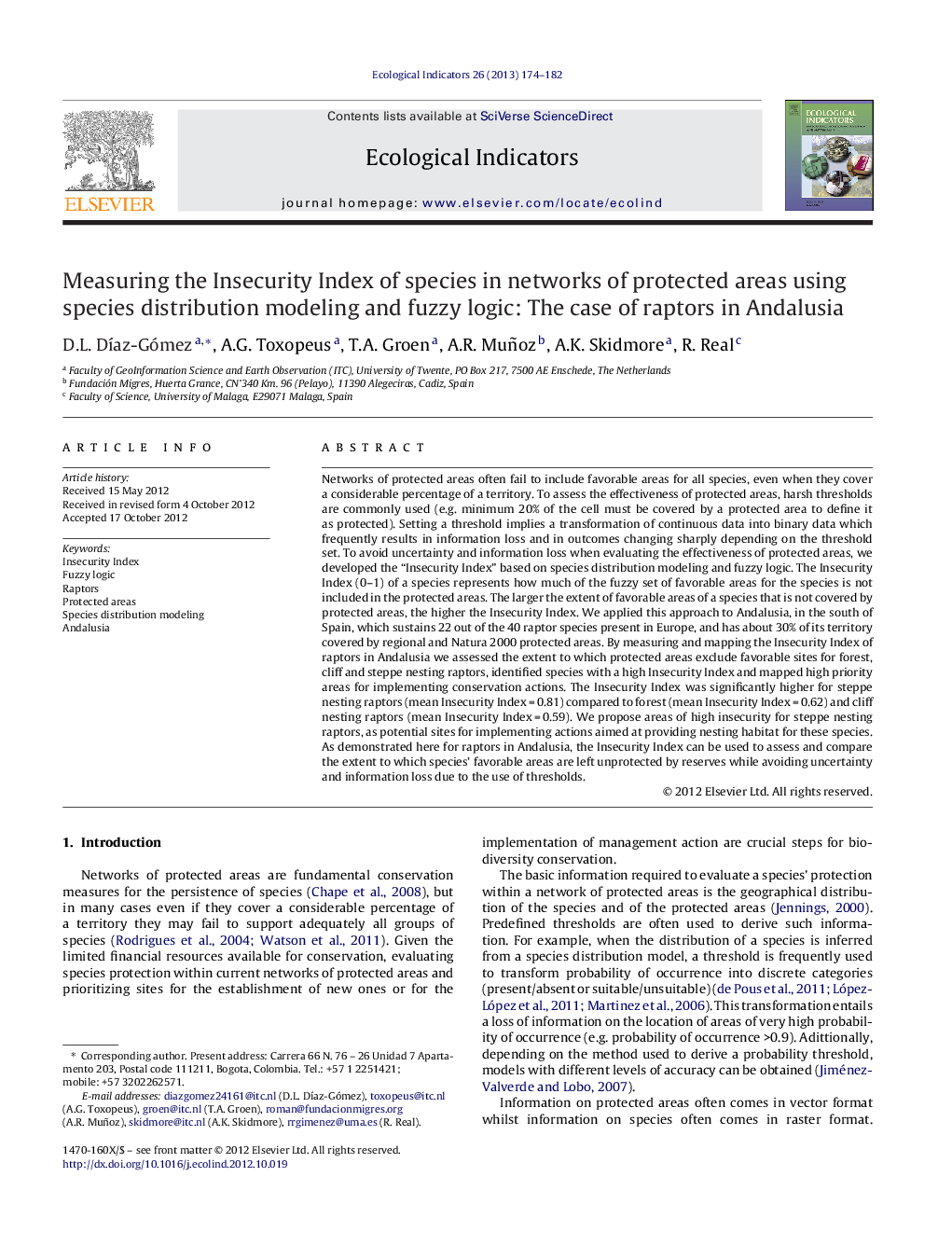| کد مقاله | کد نشریه | سال انتشار | مقاله انگلیسی | نسخه تمام متن |
|---|---|---|---|---|
| 4373575 | 1617174 | 2013 | 9 صفحه PDF | دانلود رایگان |

Networks of protected areas often fail to include favorable areas for all species, even when they cover a considerable percentage of a territory. To assess the effectiveness of protected areas, harsh thresholds are commonly used (e.g. minimum 20% of the cell must be covered by a protected area to define it as protected). Setting a threshold implies a transformation of continuous data into binary data which frequently results in information loss and in outcomes changing sharply depending on the threshold set. To avoid uncertainty and information loss when evaluating the effectiveness of protected areas, we developed the “Insecurity Index” based on species distribution modeling and fuzzy logic. The Insecurity Index (0–1) of a species represents how much of the fuzzy set of favorable areas for the species is not included in the protected areas. The larger the extent of favorable areas of a species that is not covered by protected areas, the higher the Insecurity Index. We applied this approach to Andalusia, in the south of Spain, which sustains 22 out of the 40 raptor species present in Europe, and has about 30% of its territory covered by regional and Natura 2000 protected areas. By measuring and mapping the Insecurity Index of raptors in Andalusia we assessed the extent to which protected areas exclude favorable sites for forest, cliff and steppe nesting raptors, identified species with a high Insecurity Index and mapped high priority areas for implementing conservation actions. The Insecurity Index was significantly higher for steppe nesting raptors (mean Insecurity Index = 0.81) compared to forest (mean Insecurity Index = 0.62) and cliff nesting raptors (mean Insecurity Index = 0.59). We propose areas of high insecurity for steppe nesting raptors, as potential sites for implementing actions aimed at providing nesting habitat for these species. As demonstrated here for raptors in Andalusia, the Insecurity Index can be used to assess and compare the extent to which species’ favorable areas are left unprotected by reserves while avoiding uncertainty and information loss due to the use of thresholds.
► Species distribution modeling and fuzzy logic were used to build an Insecurity Index of species under reserve networks.
► The Insecurity Index represents how much of the favorable areas for the species is not included in the reserve network.
► The index addresses the problem of uncertainty and information loss derived from the use of harsh thresholds.
► The Insecurity Index was calculated for raptors in Andalusia (southern Spain).
► Steppe nesting raptors presented the highest Insecurity Indices.
Journal: Ecological Indicators - Volume 26, March 2013, Pages 174–182